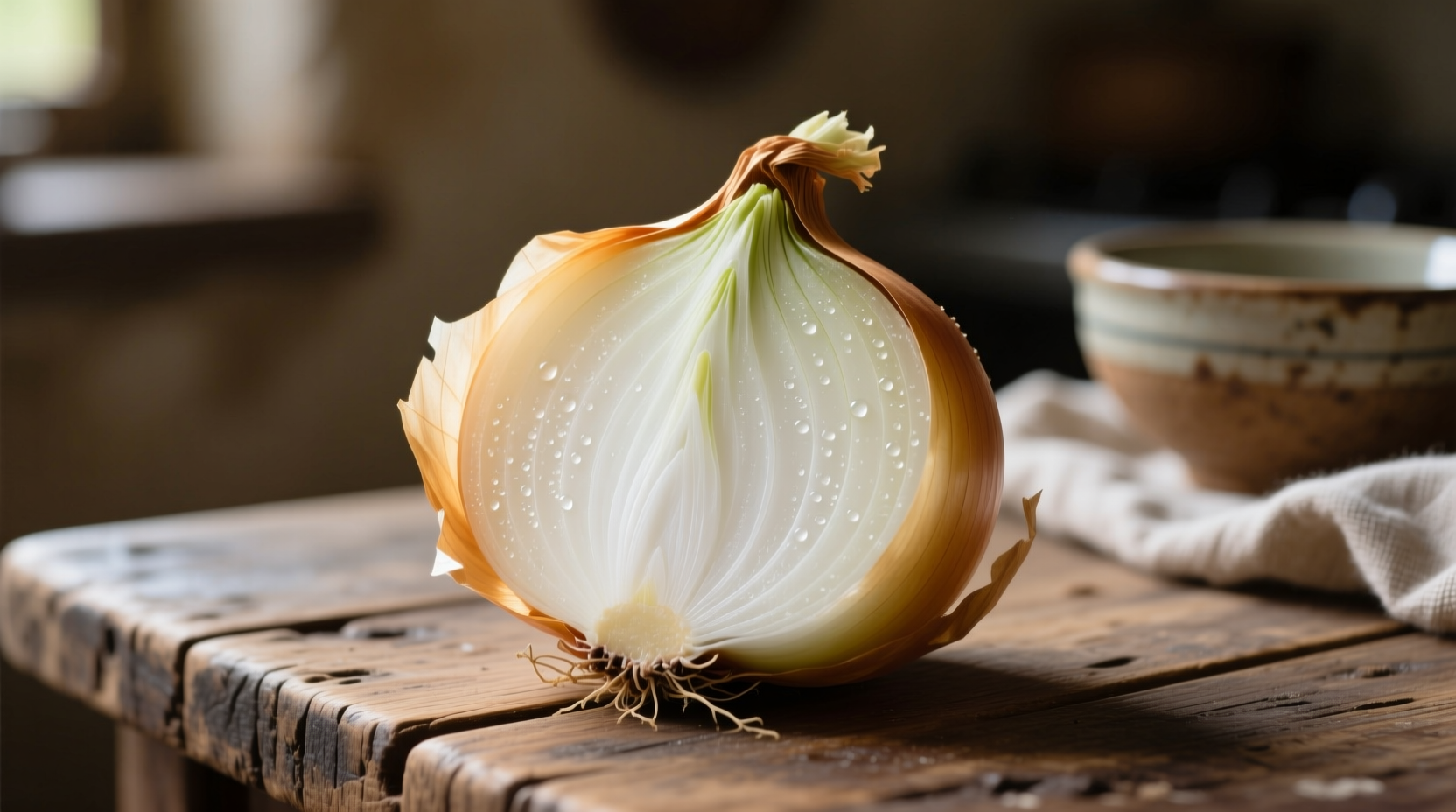When you reach for onions at the grocery store, you've probably noticed "Spanish onions" among the options. Despite the name, these aren't exclusive to Spain nor the only onions used in Spanish cuisine. They represent a specific variety prized by home cooks and professional chefs alike for their balanced flavor profile that works beautifully both raw and cooked.
What Exactly Are Spanish Onions?
Spanish onions refer to a particular type of large, globe-shaped yellow onion with pale golden-brown skin and crisp white flesh. They typically measure 3-4 inches in diameter and can weigh up to 1 pound each. What sets them apart is their notably mild, slightly sweet flavor with just the right amount of pungency—making them incredibly versatile in the kitchen.
The "Spanish" designation doesn't indicate origin but rather describes a style of onion that became popular through Spanish trade routes. Historical agricultural records show these onions gained prominence when Spanish explorers distributed onion varieties across continents during the 15th and 16th centuries, though modern Spanish onions are primarily grown in the United States, Mexico, and Brazil.
| Onion Variety | Flavor Profile | Best Culinary Uses | Storage Duration |
|---|---|---|---|
| Spanish Onions | Mild, slightly sweet | Raw applications, caramelizing, roasting | 2-3 months |
| Yellow Onions | Stronger, more pungent | Cooking, soups, stews | 2-3 months |
| Red Onions | Sharp, peppery | Salads, pickling, garnishes | 3-4 weeks |
| White Onions | Crisp, clean flavor | Mexican cuisine, salsas | 1-2 months |
How Spanish Onions Differ From Other Varieties
While often confused with standard yellow onions, Spanish onions have distinct characteristics that affect both flavor and cooking performance. According to USDA agricultural research, Spanish onions contain lower levels of pyruvic acid (the compound responsible for onion pungency) compared to regular yellow onions, resulting in their milder taste.
Their larger size and higher water content make them particularly well-suited for caramelizing. When cooked slowly, Spanish onions develop a beautiful golden-brown color with complex sweet notes while maintaining their structure better than smaller onion varieties. This makes them ideal for French onion soup, pizza toppings, and burger garnishes where you want visible onion pieces rather than complete disintegration.

Practical Applications in Your Kitchen
Understanding when to use Spanish onions can transform your cooking results. Here's how to maximize their potential:
Raw Applications
Their mild flavor shines when used raw. Try them in:
- Fresh pico de gallo or salsa fresca (they won't overpower other ingredients)
- Thinly sliced on sandwiches and burgers (less likely to cause eye-watering than yellow onions)
- Salads where you want onion presence without overwhelming sharpness
- Quick-pickled for tacos and grilled meats
Cooked Applications
When heat transforms their natural sugars:
- Caramelizing: Their size and structure hold up beautifully during slow cooking
- Roasting: Cut in half and roasted alongside meats for natural sweetness
- Gratinés: Perfect base for French onion soup with their balanced flavor
- Stir-fries: Add during the last few minutes for texture and mild onion flavor
Selecting and Storing Spanish Onions Properly
Choose Spanish onions that feel heavy for their size with firm, dry skins and no soft spots. Avoid any with green sprouts or damp areas, which indicate aging. The neck should be completely dry and tight—bulbous necks suggest the onion is past its prime.
For optimal storage, keep Spanish onions in a cool, dark, well-ventilated space at 45-55°F (7-13°C) with 65-70% humidity. Never store them near potatoes, which release gases that accelerate onion spoilage. Properly stored, they'll maintain quality for 2-3 months—significantly longer than many other fresh produce items.
If you've cut a Spanish onion, wrap the unused portion tightly in plastic wrap and refrigerate for up to 7 days. For longer storage, dice and freeze in an airtight container for up to 6 months (though texture will change, making them best for cooked applications).
Nutritional Benefits Worth Noting
Like all onions, Spanish varieties offer impressive nutritional benefits. According to USDA FoodData Central, one medium Spanish onion (148g) provides:
- 64 calories
- 15g carbohydrates
- 3g dietary fiber (12% of daily value)
- 11g sugar
- 2g protein
- Significant vitamin C, B6, and folate
- Rich in antioxidants like quercetin
These nutritional properties remain largely intact whether eaten raw or cooked, though some heat-sensitive compounds decrease with prolonged cooking. The fiber content supports digestive health, while the antioxidants may help reduce inflammation.
Smart Substitutions When Spanish Onions Aren't Available
Don't let unavailable Spanish onions derail your recipe. Consider these alternatives based on your cooking application:
- For raw applications: White onions (more pungent) or sweet Vidalia onions (sweeter, less structured)
- For caramelizing: Yellow onions work well but may require slightly longer cooking
- For Mexican dishes: White onions maintain better texture in salsas
- For French onion soup: Combination of yellow and red onions for color and flavor depth
When substituting, adjust quantities based on flavor intensity—use 25% less yellow onion when replacing Spanish onions in raw applications to avoid overpowering other ingredients.
Why Chefs Prefer Spanish Onions
Professional kitchens consistently stock Spanish onions for good reason. Their consistent size allows for uniform slicing and predictable cooking times. The mild flavor profile provides versatility across dishes without requiring recipe adjustments for varying onion strengths. Most importantly, they deliver reliable results whether served raw or cooked—unlike some varieties that excel in only one application.
When developing recipes, consider how Spanish onions' balanced flavor won't dominate other ingredients while still providing that essential onion foundation. This makes them particularly valuable in dishes where multiple flavors need to shine equally, from complex stews to fresh vegetable medleys.











 浙公网安备
33010002000092号
浙公网安备
33010002000092号 浙B2-20120091-4
浙B2-20120091-4